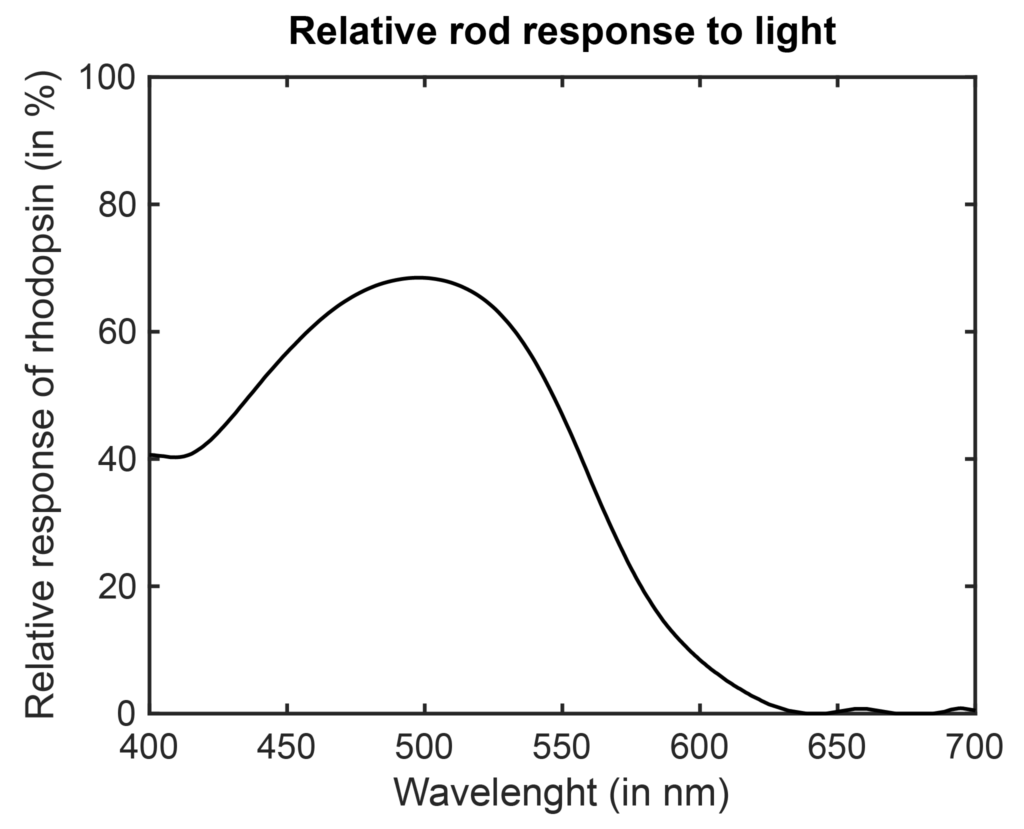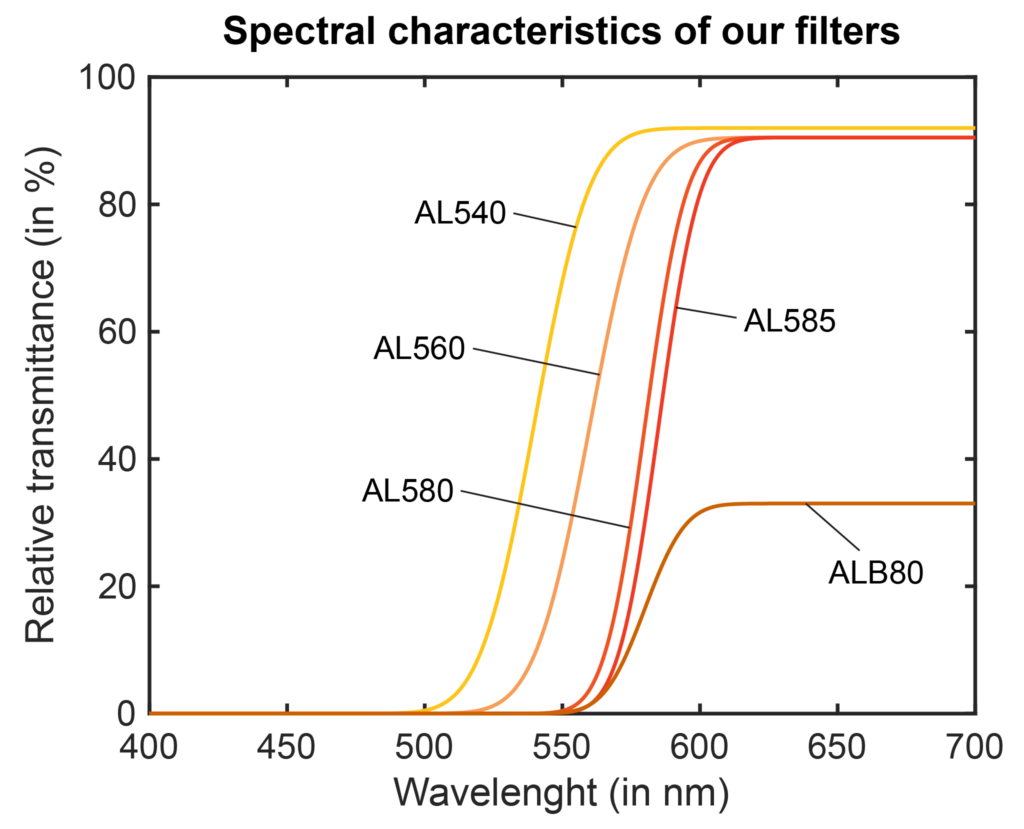Simple science
There are two types of photoreceptors cells located on the retina. These are rods and cones. Rods function mainly in dim light and provide black-and-white vision while cones support the perception of color and sharp and detailed vision. For people affected by Achromatopsia cones do not function.
The only way to see something is using their rods. The problem is that rods do not work in intense light. They only function properly in less intense light and they are designed for night vision. Therefore, how to enable people with Achromatopsia to see in daylight ? To be able to address this issue you have to understand the basics of the rod specifications. Rod cells are very sensitive to the light but the sensitivity depends on the wavelength of the light (color). The chart on the left shows the characteristics of the rods.
As you can see, the rods are most sensitive to the wavelength of about 500 nm. This part of the spectrum causes glare and eye squinting. In order to enable rods to function in intense light you have to cut off the part of the light spectrum where rods are most sensitive. And here the special filters come. Initially, we use four different filters to meet the characteristics of the rods of given individuals but they all use the same concept. The characteristics of our filters are shown on the right. Based on the feedback from our customers we plan to develop later more filters if needed.
We also have filters which are a combination of the basic range AL540-AL585 and brown dimming.
They are an equivalent of our basic filters and regular brown sunglasses.
The characteristics of the rods with filters applied is shown below.
As you can see the response of rods is much lower with filters than without them. The filters help reduce the glare and minimize the eye squinting. In addition, contact lenses stick firmly to the eye and they block effectively the light coming from the outside. They also reduce or eliminate completely the nystagmus. Therefore the filters in contact lenses work much better for Achromatopsia than regular glasses. We also have observed that people using the tinted contact lenses for a long time notice general vision improvement. In such cases photophobia was reduced.




